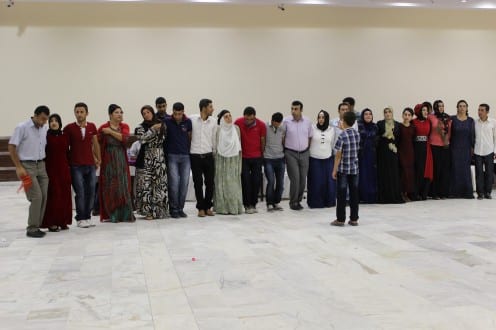Facebook, tribes and internal migration in Turkey
By Elisabetta Costa, on 12 December 2013

Photo by Elisabetta Costa
In my field-site in south-east Turkey, Facebook is a very important communication tool for keeping alive extended family relationships. On Facebook, people communicate with first, second, and third degree relatives living in different regions of Turkey. The number of relatives that a person has on social media varies between 20 and 300. While parenting and sibling long-distance relationships are usually maintained on the phone and more recently on WhatsApp, extended family relationships are maintained through Facebook. This form of social media seems to be the most appropriate to communicate with distant relatives with whom there is not intimate and close contact.
In South-East Turkey both among Arab and Kurdish populations, tribes have been the main social organization that has captured the attention of anthropologists for several years. What happens to the relationships between members of the same small tribe when they migrate to different parts of the country? The migration of Turkey’s Kurdish and Arab population from the East to the Western Provinces has been massive in the last decades and continues today. Due to this migration, Istanbul became the “the biggest Kurdish city” in Turkey; and all the Western cities of Turkey are inhabited by a big number of Kurds and Arabs.
In Dry Rock Town I have met many people who use Facebook to communicate with relatives living in different parts of the country. Those not belonging to any tribes usually communicate with first degree relatives, e.g. cousins, aunts and uncles. Those who are attached to a tribe organization usually communicate with a bigger number of family members, and this the case of rural people.
M. is a 19 years old Kurdish boy who came to Dry Rock Town from a near village to attend the preparatory classes (Dershane) to be able to pass the university entrance exam. On Facebook he has 200 friends of which 180 are family members living in different parts of Turkey. The ten persons he speaks to most on Facebook are ten cousins who live in Istanbul, Izmir and Cyprus in order to study or work. The remaining 170 are first and second degree relatives distributed among Istanbul, Cyprus, Mersin, Dry Rock Town, and towns in the same province as Dry Rock Town. On Facebook he doesn’t communicate with relatives living in the village. He says he doesn’t have the need to do so because he meets them every weekend and they mainly communicate face by face.
S. is a 24 years old Arab girl who grew up in a village of Dry Rock Town Province and migrated to a town of Western Turkey six years ago with her family. On Facebook she has 90 friends of which 80 are relatives living in different part of Turkey and 10 are school friends. Only one Facebook friend lives in the same town where she lives at the moment. The 10 persons she speaks with most on Facebook are 7 cousins, 1 aunt, and 2 school friends, who live in different parts of Turkey. And the people closest to her, aside from her immediate family, are cousins living all around the country. She doesn’t like the place where she lives now, she feels discriminated because of her south-eastern origins, and she doesn’t have friends there.
The anthropologist Martin Van Bruinessen (2002) ten years ago wrote that tribes and tribalism in Kurdish society were alive and more pervasive than the decades before. To confirm his theory and bring it further I believe that intra-tribe relationships in many cases continue to be the most important ones for a new generation of young adults who experience migration more and more. Thanks to social media, people are able to maintain these relationships despite migration and urbanization processes. While the people I’ve interviewed have continually mentioned to me the existence of their tribe (Aşiret), proving the existence of a strong tribe ideology, only after having looked at their Facebook’s practices did I start to understand what tribe is for them.
Martin van Bruinessen, 2002, ‘Kurds, states and tribes’ in Faleh A. Jabar and Hosham Dawod (eds), Tribes and power: nationalism and ethnicity in the Middle East. London: Saqi.
 Close
Close




